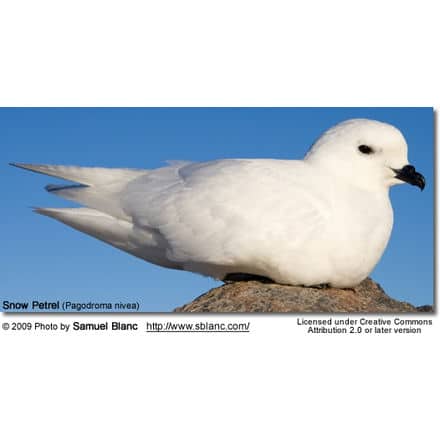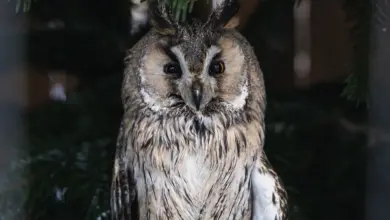Tyrian Metaltails – Hummingbirds
The Tyrian Metaltail (Metallura tyrianthina) is a South American hummingbird with a fragmented range in the Andes mountain range at elevations of 1700 up to 3800 m; specifically, they are found in north and west Venezuela, Columbia, Ecuador, northern and Central Peru and Central Bolivia.
They inhabit subtropical or tropical humid montanes and heavily degraded former forests.
Subspecies and Ranges
- Metallura tyrianthina tyrianthina (Loddiges, 1832) – Nominate Race
- Range: Northwestern Venezuela (southwest Táchira) through all Andean chains of Colombia and east and south Ecuador to extreme northern Peru
- Metallura tyrianthina district (Bangs, 1899)
- Range: Santa Marta and Perijá Mts (northeastern Colombia)
- Metallura tyrianthina chloropogon (Cabanis and Heine, 1860)
- Range: Caribbean coastal range in northern Venezuela
- Metallura tyrianthina oreopola (Todd, 1913)
- Range: Andes of Venezuela (Lara, Trujillo, Mérida).
- Metallura tyrianthina quitensis (Gould, 1861)
- Range: Northwest Ecuador
- Metallura tyrianthina septentrionalis (Hartert, 1899)
- Range: Andes of Peru (West of the Marañón River)
- Metallura tyrianthina smaragdinicollis (d’Orbigny and Lafresnaye, 1838)
- Range: East Andes of Peru and northern Bolivia
Description:
The Tyrian Metaltail is a tiny hummingbird that averages 3.2 inches or 8.1 cm in length and it weighs only around 0.1 oz or 3.9 g. Its short bill is about 0.4″ or 11 mm long.
The male has a dark bronzy green upper plumage. His small gorget (throat patch) is a glittering green. The rest of the underplumage is a dull dark green. His tail is large and somewhat forked; its color is variable and depending on light conditions it either looks golden purplish red or a darker golden maroon.
The female looks like the male, but her throat and chest are a buffy rufous somewhat speckled green. The rest of her under plumage is a buffy white with varying amounts of green spotting.
Hummingbird Resources
- Hummingbird Information
- Hummingbird Amazing Facts
- Attracting Hummingbirds to Your Garden
- Hummingbird Species
- Feeding Hummingbirds
Nesting / Breeding
Hummingbirds are solitary in all aspects of life other than breeding, and the male’s only involvement in the reproductive process is the actual mating with the female. They neither live nor migrate in flocks, and there is no pair bond for this species. Males court females by flying in a U-shaped pattern in front of them. He will separate from the female immediately after copulation. One male may mate with several females. In all likelihood, the female will also mate with several males. The males do not participate in choosing the nest location, building the nest, or raising the chicks.
The female Tyrian Metaltail is responsible for building the cup-shaped nest out of plant fibers woven together and green moss on the outside for camouflage in a protected location in a shrub, bush, or tree. She lines the nest with soft plant fibers, animal hair, and feathers down, and strengthens the structure with spider webbing and other sticky material, giving it an elastic quality to allow it to stretch to double its size as the chicks grow and need more room. The nest is typically found on a low, thin horizontal branch.
The average clutch consists of two white eggs, which she incubates alone, while the male defends his territory and the flowers he feeds on. The young are born blind, immobile, and without any down.
The female alone protects and feeds the chicks with regurgitated food (mostly partially-digested insects since nectar is an insufficient source of protein for the growing chicks). The female pushes the food down the chicks’ throats with her long bill directly into their stomachs.
As is the case with other hummingbird species, the chicks are brooded only the first week or two and are left alone even on cooler nights after about 12 days – probably due to the small nest size. The chicks leave the nest when they are about 7 – 10 days old.
Diet / Feeding
The Tyrian Metaltail primarily feeds on nectar taken from a variety of brightly colored, scented small flowers of trees, herbs, shrubs, and epiphytes. They favor flowers with the highest sugar content (often red-colored and tubular-shaped) and seek out, and aggressively protect, those areas containing flowers with high-energy nectar. They use their long, extendible, straw-like tongues to retrieve the nectar while hovering with their tails cocked upward as they are licking at the nectar up to 13 times per second. Sometimes they may be seen hanging on the flower while feeding.
Many native and cultivated plants on whose flowers these birds feed heavily rely on them for pollination. The mostly tubular-shaped flowers exclude most bees and butterflies from feeding on them and, subsequently, from pollinating the plants.
They may also visit local hummingbird feeders and can grow quite confiding.
They also take some small spiders and insects – important sources of protein particularly needed during the breeding season to ensure the proper development of their young. Insects are often caught in flight (hawking); snatched off leaves or branches, or taken from spider webs. A nesting female can capture up to 2,000 insects a day.
Males establish feeding territories, where they aggressively chase away other males as well as large insects – such as bumblebees and hawk moths – that want to feed in their territory. They use aerial flights and intimidating displays to defend their territories.
Calls / Vocalizations
Its song is described as a weak, lispy “seek, sick, see, si, see, seek, sip see … Alarmed or excited birds make stuttering trills interspersed with squeaky “turret, tdrrt ti-see-see”. While feeding, they may emit a rough trill slowing to a series of high notes that are described as “ts’ts’ts’ts’ts’see’see’seek-seek”, descending slightly.




